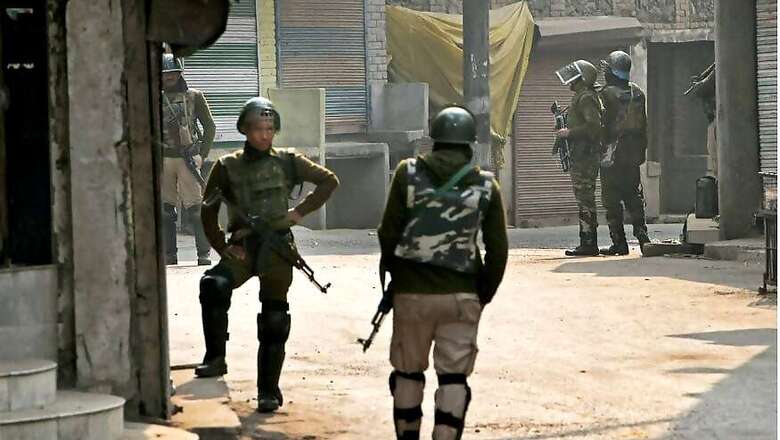
views
New Delhi: Encounters between security forces and militants in Kashmir have become a new norm now. The security forces made major advancements by eliminating top militants in the last few months. However, what remains a cause of worry for many are the civilian killings during the counter insurgency operations.
So far, 26 civilians, mostly protesters were killed in firing during anti-militancy operations by security forces since January.
The worrying trend was witnessed on Tuesday as well, when a civilian was killed in Hakripora village of Pulwama district, following the death of two militants including top LeT commander Abu Dujana.
The deceased identified as Firdous Ahmad Khan of Begumbagh Kakapora was critically injured during the clashes and had sustained bullet injuries on his chest. Six others were injured after security forces resorted to firing to disperse the protesters.
In February, two civilians were killed near an encounter site in Frislan Kulgam in south Kashmir when four militants were killed in the encounter. The deaths had prompted hundreds of people to descend on the streets of Kulgam in south Kashmir and its adjoining areas.
The protesters killed in the firing were identified as 24-year-old Mushtaq Ibrahim from Sirgufwara and 38-year-old Aashiq Reshi of Kulgam.
In March, three civilians were shot dead in Chadoora in central Kashmir when the protesters were trying to disrupt an anti-militancy operation in which one Hizbul Mujahideen militant was killed.
In May, one protester was killed as protests erupted near the site of the gun-battle in which popular Hizbul militant Sabzar Bhat was killed. Two others, including a 15-year-old boy in Srinagar, were killed in separate incidents in Kupwara and Srinagar later that month.
June itself saw the killing of five protesters in separate incidents in Shopian, Rangreth, Pulwama and Arwani. July saw the killings of two civilians near the Anantnag encounter site, including a woman, when Bashir Lashkari of LeT was gunned down by security forces.
Major newspapers of the state have reported that the deaths were caused by ‘alleged’ firing by security forces to quell the protests.
The civilian deaths at encounter sites have continued despite an advisory by the police earlier this year, asking people to stay indoors at the time of an encounter between militants and security forces.
Earlier in February, army chief General Bipin Rawat had warned of stern action against civilians who would try to disrupt counter-insurgency operations.
Data from the Jammu Kashmir Coalition of Civil Society (JKCCS) also show a spike in civilian deaths in the January-June period in conflict-related incidents this year.
The civilian deaths during encounters can also be attributed to the fact that the Valley has seen support for the militants – both local and foreign – from last few years. Some residents at a few encounter sites have apparently been helping militants escape the police and law.
Police officials News18 spoke with also reiterated that the people in the Valley, particularly the youth, risk their lives by going to the encounter sites to help militants break the security cordon.
“We always ensure there is no collateral damage and civilians do not suffer during anti-militancy operations but protesters hamper our efforts by shouting slogans and throwing stones. This poses a great risk to locals who put their lives on the line,” said a police officer who has been part of counter-insurgency operations in the state.




















Comments
0 comment